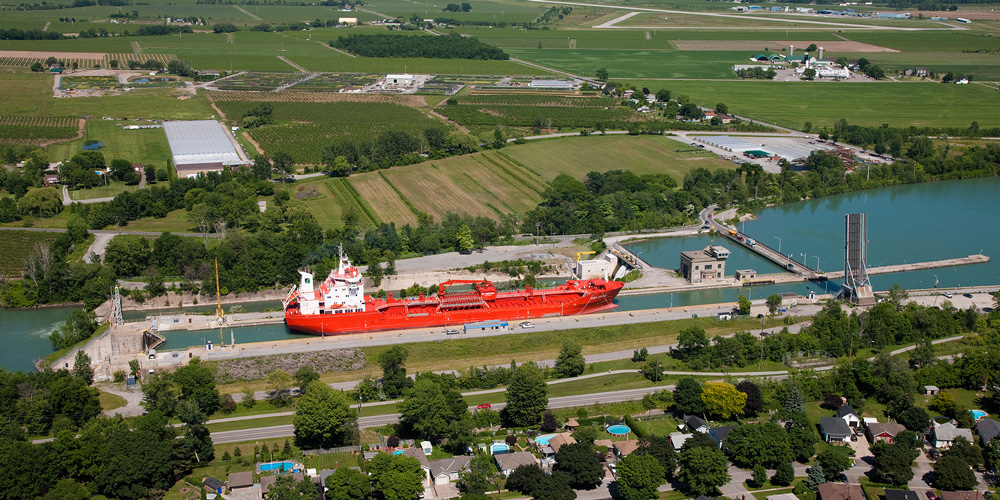January 4, 2006: St. Lawrence Seaway Closes 47th Navigation Season
January 4, 2006
Cornwall, January 4, 2006 — The St. Lawrence Seaway officially closed for the season on December 29th, 2005, with the passage of the Transport Desgagnés tanker, Maria Desgagnés, through the St. Lambert Lock at 5:40 p.m. The Seaway’s 47th navigation season commenced on March 25th, with the system remaining open for 280 days, one day shy of the record 281 days set in 2004.
The Welland Canal section closed at 11:11 p.m. on December 30th, with the transit of the Mississagi, a vessel operated by Lower Lakes Towing.
“Traffic results remained steady this year, retaining the tonnage added in 2004” noted Richard Corfe, President and CEO of The St. Lawrence Seaway Management Corporation (SLSMC). “We enjoyed steady flows within our staple bulk cargo markets, including grain and iron ore. While we experienced a decline in imported steel movements of new cargoes, including aluminum and raw sugar, readily filled in this gap. We are particularly encouraged by the results of our incentive tolls program, which we put into place in March of 2005. Aimed at capturing / recapturing cargoes, we can attribute some 215,000 tonnes of new movements to this program, resulting in more than $600,000 of additional revenue.”
The wide variety of cargoes witnessed this year highlights the unique and vital role that the Seaway plays within the Canadian and U.S. economies. Not only does the marine mode provide the most energy efficient mode of transportation, project cargoes transiting via the Seaway figure prominently in the development of new, highly sustainable, industry. Throughout the season, shipments of wind turbines fabricated in Europe arrived via Seaway ports.
“This year may well be looked back upon as a watershed year, marking the beginning of a new era in Seaway shipping” expounded Corfe. “Our Hwy H2O marketing campaign, an effort that we have undertaken jointly with the U.S. Saint Lawrence Seaway Development Corporation and many of the ports within our system, is generating significant interest. We have sponsored workshops this year, aimed at capturing new cargo in a number of sectors including steel, auto parts, forestry, and containers.”
The Hwy H2O container conference brought delegates together from a variety of industries, illustrating the role that the SLSMC plays as a catalyst to bring about change. Various speakers outlined the opportunity to harness the Seaway as a means to deal with the bottlenecks that have emerged over land during the past five years. As the marine mode gains exposure, the Seaway expects to realize the movement of containers from the East Coast to key inland hub ports.
Raising awareness that the Seaway offers a complementary alternative to our congested road and rail arteries, resulting in a stronger multimodal network, is a central goal of the Hwy H2O campaign. Short sea shipping, a concept that has existed for some time in Europe, is gaining traction here. Already, short sea movements have begun in earnest on the lower St. Lawrence River, with aluminum ingots being moved by specially configured tug and barge from Sept-Îles to Trois Rivières and onward through the Seaway to Toledo, a harbinger of more good things to come.
The Seaway is now closed for the winter to accommodate annual maintenance on its 13 Canadian locks and connecting channels. This year’s winter works program encompasses some $23 million in expenditures, divided between the Montreal / Lake Ontario section ($7 million) and the Welland Canal section ($16 million).
Projects include upgrades to various locks and bridges, including the conversion of lock gates, valves and ship arrestors to hydraulic operation for Welland Canal Locks 4, 5 and 6. Evidence of the Seaway’s commitment to excellence, this investment will ensure that the system continues to offer carriers over 99% system availability, with the added benefit of lower annual maintenance costs.
The Seaway is expected to re-open in late March 2006.






